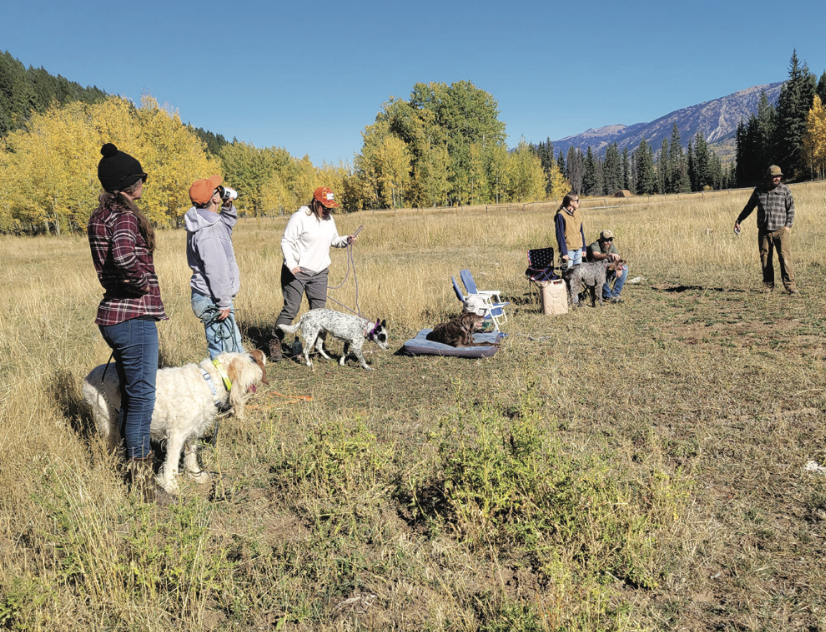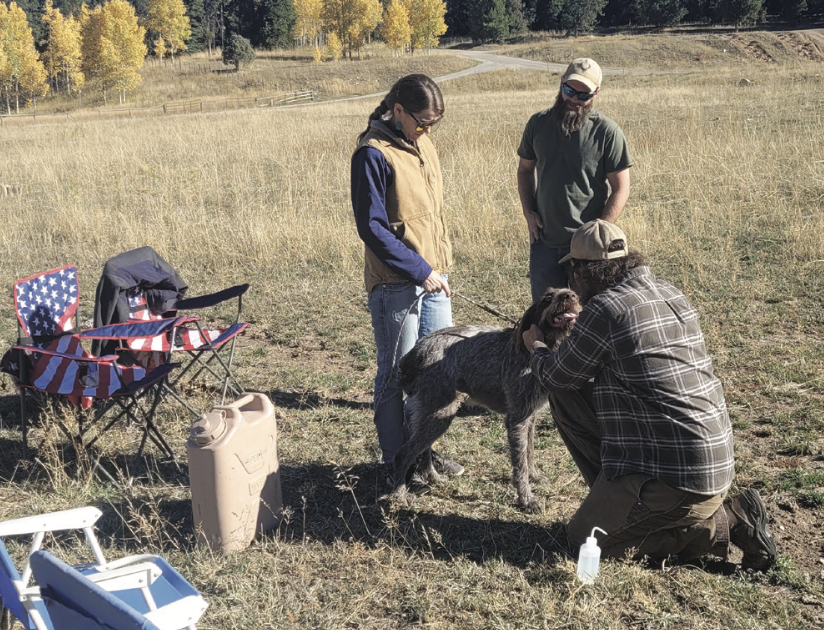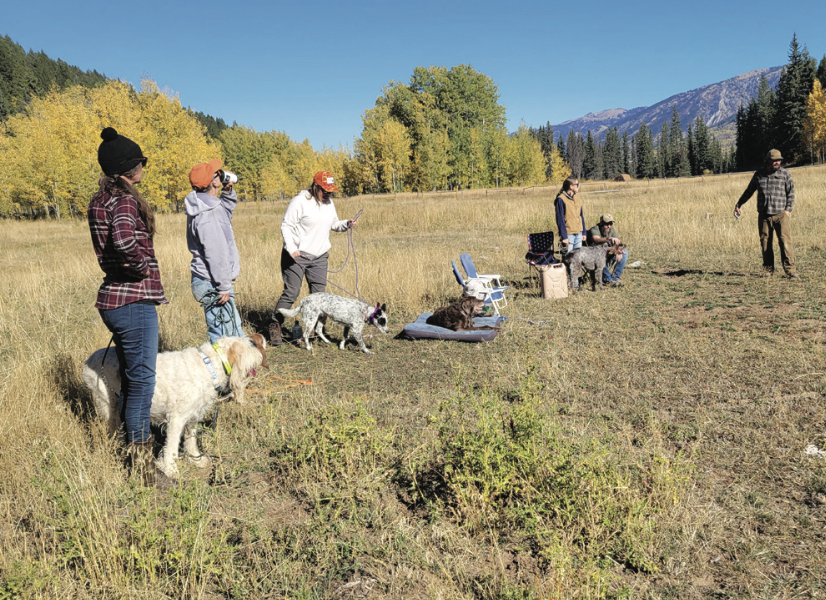
• Local dog trainer offers classes in scent aversion.
Teaching your dogs aversion to certain scents could save their lives. At least that’s what one local dog trainer hopes is the result of his efforts to help dog lovers avoid the tragedy that befell one valley woman last February. Jester, the beloved brown and white English Bull Terrier owned by Becky Barber, was killed when he got caught in a beaver trap off Swift Creek Canyon Road.
“Lethal traps have shocked too many families just anticipating a relaxing outdoor experience, instead faced with the traumatic deaths of their four-legged friends,” Barber said, as related in a recent press release from Jester’s Legacy, a grassroots group gathering names and support for what a spokesperson calls “reasonable asks” for changes in trapper education and “setback” regulations.
Hearing of Jester’s death, dog trainer Mike Parmley of Star Valley Ranch learned that because such traps are baited, there was a possible path for dogs to learn what scents to avoid. So, working with some local trappers sympathetic to Jester’s Legacy, he came up with a low-cost, one-day class for dogs to learn to avoid the scents used on the traps.
“When I was first told that Mike was working on a trap aversion class, my thoughts were of how that would possibly work and how wonderful that would be,” Barber added, via correspondence with SVI Media.

To inform the public about this class, SVI Media spoke with Parmley, a professional dog trainer who is also based in Salt Lake City with his business, Barley’s Canine Recreation Center. Typically, Parmley trains canines in pools and also with rattlesnake aversion, but learning about Jester led him to educate himself on trap scents and aversion.
“I found out about [Jester] and thought, ‘What can I do to help out?’ I’d been approached before by a woman in Lander about trap aversion. I didn’t really know anything about trapping, so I started talking with trappers … on board with Jester’s Legacy.”
Parmley learned that conibear traps — the kind that killed Jester — and snares are typically baited with certain sets of scents, such as beaver castor or skunk scent glands. And he learned that a company in Michigan offers four lures that contain different sets of scents used specifically on traps meant for instant euthanasia.
“If you could get your dog to stay away from these scents, this should cover your bases, as far as what people are using with these deadly traps,” Parmley told SVI.
He also cooperated with professionals working with military and police dogs and learned “it’s common to work with a cocktail of scents. That’s very reasonable to have the dogs pick up on these scents. Dogs are good are distinguishing scents, a lot better than humans.”

For example, Parmley said, humans may walk into a room with pasta sauce cooking and say it smells good. A dog will distinguish between the tomato, garlic and basil.
Thus, Parmley held his first class on Oct. 6 for a class of about six dogs and their Star Valley owners, including Barber with her other Bull Terrier, Kaia. “It took about three hours,” Parmley related. “It’s designed to be a one-time thing the dogs remember the rest of their lives. The dogs don’t need a refresher. It’s a more involved class. I make sure they know the scent is a bad thing.
“I want to bring them in downwind, and they have as much time as they need to pick up on that scent and stay away from it. If a dog is walking on a trail, he’s working the wind. They want to see what they can get into. They typically work downwind of things.”
Then, once the dog picks up one of the scent lures, Parmley, using an E-collar, gives the canine a mild electronic impulse. “I can stay on a low level on the impulse and get done what I need to get done.”
In addition, because dogs are “place specific,” he moves the lures around, so the dog associates the aversion with the scent and not the locale.
“I was in awe watching Mike work with the dogs, teaching them to avert from the various scents specific to our area trappers,” Barber told SVI. “I would encourage anyone out on public lands with pets to look into this training. It is another layer of safety we, as responsible pet owners, can provide.”
To sign up for upcoming classes at a place to be later determined, see the website for Parmley’s business, www.rattlesnakealert.com, or email Parmley at mike@swimatbarleys.com. You can also email your interest in the classes to jesterslegacy1020@gmail.com. The cost for the class is about $140.





